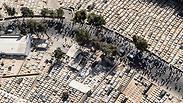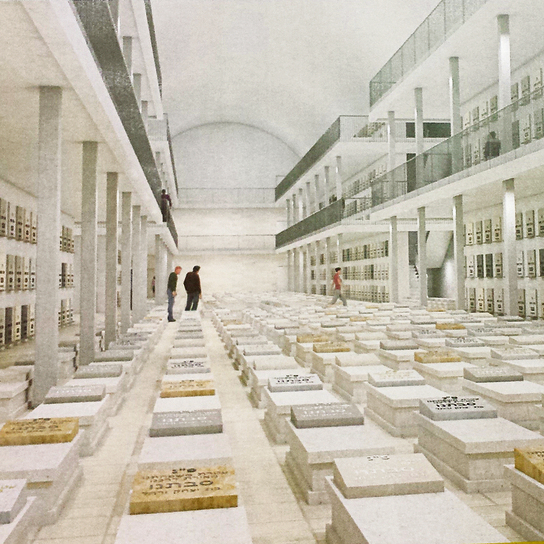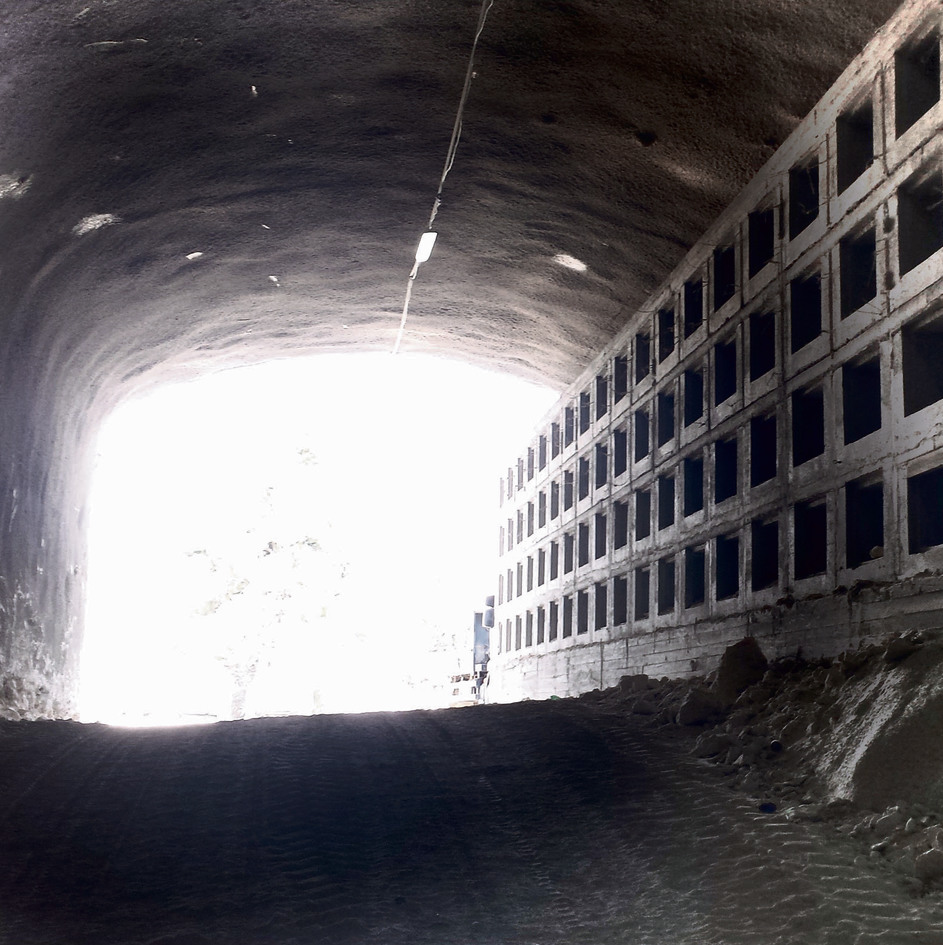
Subterranean cemetery 'city' being constructed in Jerusalem
As a solution to the dearth of burial space in the capital, a large section of a mountaintop is being excavated to permit an underground city of graves.
According to Jewish tradition, being buried in Jerusalem has a special significance: Those buried in the capital are believed to be the first to reach the Temple Mount with the resurrection of the dead with the coming of the Messiah. This has put a premium on burial space, so a new solution has been initiated.
By the end of the 1990s, it became clear that burial lands in the Jerusalem area had run out, and cost-effective methods would be necessary to obtain further property to lay the dead to rest. A city of such a size requires about 4,400 new graves per annum.
Currently, underneath the huge Givat Shaul Cemetery on Har HaMenuchot, a subterranean city of graves is being constructed, the first of its kind in the modern world. This project's first phase intends to provide another 22,000 burial places with barely any additional land requirements.
Simply, the mountaintop will have a large section of its interior excavated, and graves will be placed within, including multiple levels along the walls.
This project is the initiative of the Kehilat Yerushalayim burial society, which is a leader in undertaking in the capital. It hands about half of the burials in Jerusalem. The area for the project is 578 dunams, with 1,250 graves allotted per dunam. This is in comparison with the current rate of 320 graves per dunam.
The central pit of the subterranean cemetery will be 50 meters deep (the height of a 15-floor building).
Access to the graves will be via three elevators that hold 90 persons each. There will be five main entrances. Four of them will be from the perimeter, and the fifth will be via a descent from the center of Har HaMenuchot. The architect behind this is Zafrir Ganany of Pelleg Architects.
This is not a new invention, rather the renewal of ancient Jewish traditions: During the Second Temple period, particular amongst rich families, subterranean burial sites













